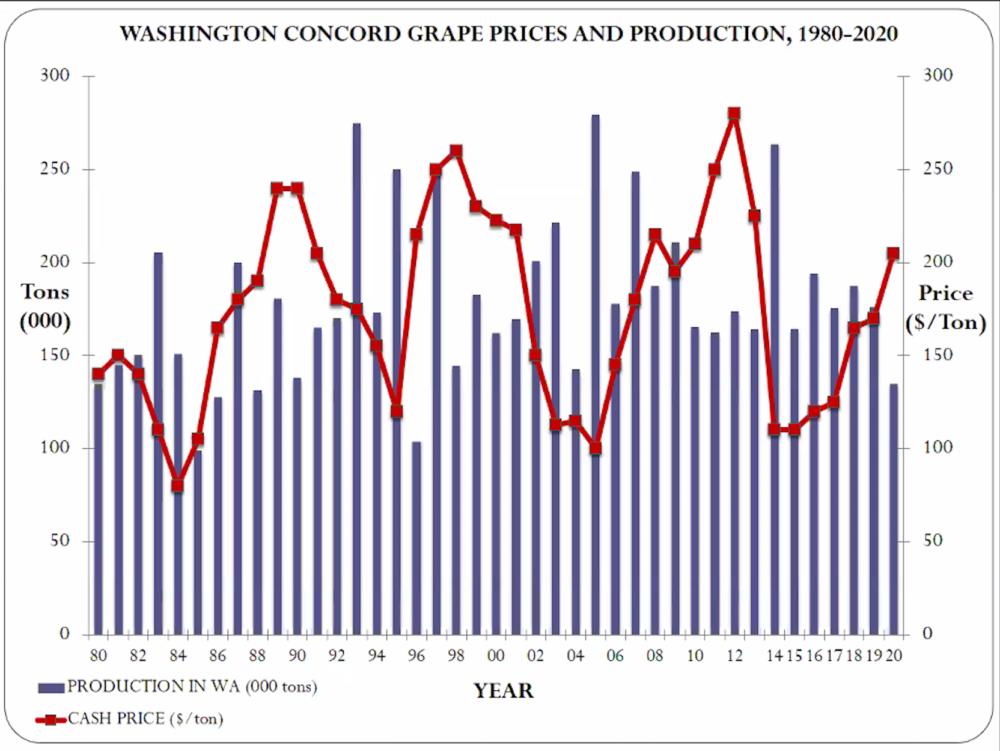Grape harvest in 2020 fell far below recent averages for both juice and wine grapes in Washington, according to industry analyst Trent Ball.
Ball, who directs the vineyard and winery technology program at Yakima Valley College, shared his market outlook during the Washington State Grape Society annual meeting, held via webinar Nov. 18 and 19.
Low prices in recent years have led growers to reduce Concord acreage, Ball said, but this year yields on the remaining acreage was lower than average, as well — perhaps an impact of the fall freezes in 2019. The good news is that cash prices continue to rebound, with an average of $205 per ton in Washington. In the Eastern U.S., where growers also saw below-average yields, the average price hit $285 per ton.

“We’re in a new normal for Washington,” Ball said, in regard to the drop in acreage. “Fortunately, I think there’s still some room for price growth, at least in the Western cash price.”
For wine grape growers, the picture was less rosy. Wine shipments declined nearly 20 percent over the past year due to the pandemic, Ball said, and wineries have a lot of inventory. Growers expected to harvest 175,000 tons of wine grapes, he said, citing recent figures from the Washington Winegrowers Association. That’s down from the early season estimate of 260,000 tons that aligns more closely with recent averages.
Other presentations focused on smoke taint and secondary pests.
Washington State University wine science professor Tom Collins shared insights from his research and those of Australian scientists seeking to understand how wildfire smoke impacts wine grapes and how those impacts can be measured and mitigated.
The smoky 2020 season provided more evidence that smoke taint is a complex issue, and the distance from fire, fuel source, variety and exposure timing all factor into whether grapes, and subsequently wine, will have unpleasant smoky flavors and aromas.
“What we know generally is that fires closer are the ones that are most likely to have a negative impact on grape or wine quality,” Collins said. “The more the smoke has to travel, it experiences an aging process” that reduces potency of the particles of particular concern for wine grapes.
He also shared some results from a trial looking at the potential of kaolin clay as a barrier spray to reduce uptake of smoke compounds. In 2019, the barrier sprays used in his smoke trails reduced levels of a key smoke marker, guaiacol, in berry skin by about 40 percent. Collins and his students repeated the trial in 2020, but they are still processing the data, he said.






Leave A Comment